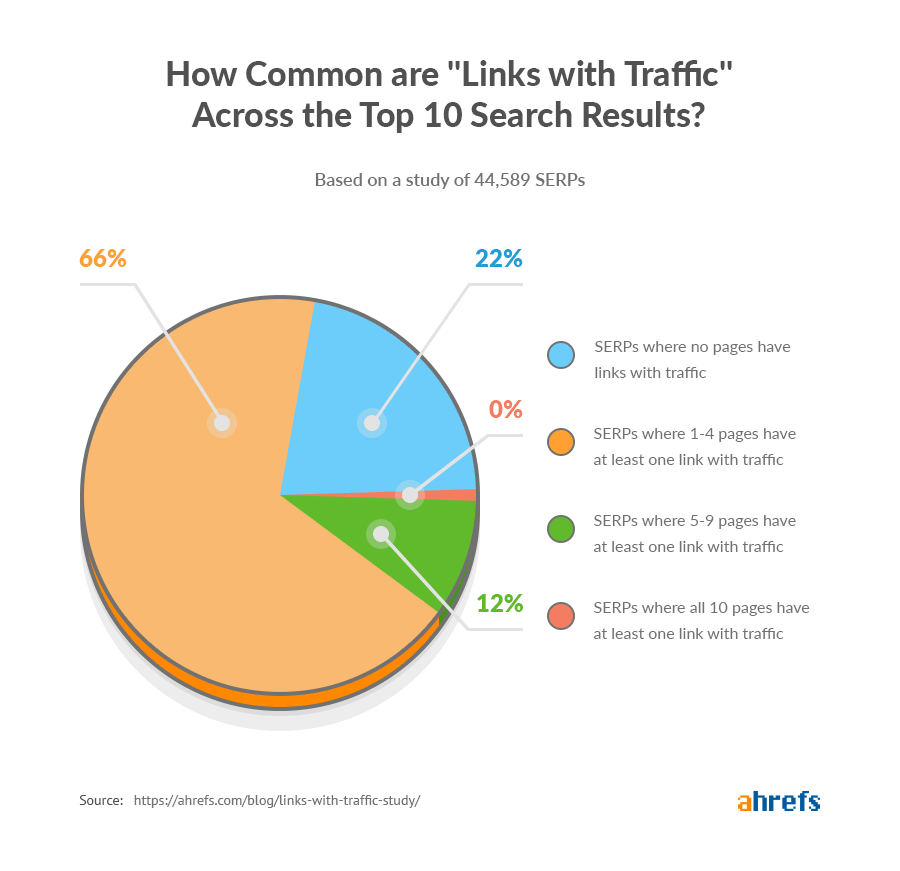- What is SEO?
- How many types of SEO are there?
- What are Backlinks?
- What are SEO backlinks?
- Why are backlinks important?
- Types of Backlinks
- What makes a good backlink?
- How can I check existing backlinks for a particular website?
- How to build backlinks?
- How to Monitor Backlinks?
- Follow these simple SEO tips to improve your site ranking.
- 1. Set up Google Search Console
- 2. Set up Bing webmaster tools
- 3. Google Analytics
- 4. Set up Yoast SEO (for WordPress users only)
- 5. Search for Your Keywords
- 6. Include the main keyword in the URL
- 7. Make a short permalink (means URL)
- 8. Start your title with a keyword
- 9. Use the main keyword in the first 150 words
- 10. Use H1, H2 or H3 tags correctly
- 11. Customize images
- 12. Avoid keyword stuffing
- 13. Use of external links
- 14. Use Internal Link
- 15. Check crawl error in search console
- 16. Check the URL
- 17. Make your website mobile-friendly
- 18. Fix broken links
- 19. Move your website to HTTPS
- 20. Fix Loading Site
- 21. Build Strong Backlinks
- 22. Quick Tips for Creating Backlinks
- 23. Write Quality Content
- 24. Mold your Meta Description according to your article
- 25. Promote Articles
- 26. Focus on grammar and Spell Check
Any website needs SEO techniques to rank their article on search engine results pages.
If you use SEO properly on your site, it will greatly affect your ranking, and your website will have the opportunity to rank on the first position on Google’s search results page. In this SEO Tutorial, I have shared my top SEO tips that will help increase organic traffic to any blog or website. But before we move ahead with this SEO Tutorial, let us understand what SEO means.
What is SEO?
SEO stands for Search Engine Optimisation. With the help of SEO, you can make your content rank in the #1 position on Google, which is one of the most popular search engines.
• SEO helps our blog to rank in the first place in the search results page.
This is a process that puts your website at the forefront of the SERPs and helps increase the number of visitors for your blog. The blog or website we see at the top of the search engine means that the SEO of that blog is very well done.
• When your website opens at the top of the search results, then users prefer to open it first.
• Therefore, SEO plays a very important role in increasing organic traffic to your website.
Now that you know what SEO means, let us see why it is important for blogs and websites. We use SEO to increase the traffic and ranking of our website. If you take care of some aspects that we will discuss below, SEO becomes an easy task for you to do. You will not get immediate results when you use SEO best practices for your blog. For this, you have to be patient and keep working towards ensuring that all the practices are followed. Before moving ahead in the SEO Tutorial, let us discuss more the types of SEO.
Also, If you want to learn SEO from the scratch then you can enroll in this SEO Course for Beginners.
Also Read- SEO vs SEM: What’s the Difference
How many types of SEO are there?
The next step in the SEO Tutorial is to learn the types of SEO. There are two types of SEO:
On-page SEO – Dependent on calling content quality, keywords, titles, tags, keyword research etc. as page SEO.
Off-Page SEO – In this SEO process, list building and promotion are involved. We need to promote our blog on social media, visit popular blogs and comment on their articles, and generate backlinks.
Under the off-page SEO, you need:
Create your account on social networking sites like Facebook, Twitter, Tumblr and increase your followers, as they play an important role in making your website successful.
Send a guest post to a popular blog. This helps you get quality backlinks. When Google ranks a webpage, it uses hundreds of ranking factors, but backlinks are the highest-ranking signal among all. Keep in mind one thing: low-quality backlinks greatly harm your site’s traffic and ranking. You can also learn SEO strategy for free with the help of an online course.
What are Backlinks?
Backlinks are an important part of SEO and an SEO Tutorial would be incomplete without talking about it. So, what are backlinks? Backlinks are incoming links to a webpage.
Here, I will tell you some terms related to links that will help you understand more about backlinks.
- Internal link – When you add a link to another post in your post, it is called internal linking.
- External linking – When you add a link to another site in your post, it is called external linking.
- Link juice – When a web page links to your article or homepage, it passes through link juice. These link juices help to increase your site ranking and domain authority.
- No-follow link – When a site links to a web page, but sets a no-follow tag for it, that link does not pass juice. The no-follow tag is used exclusively for spam or unrelated sites. These links in websites do not play any role in ranking.
- Do-follow links – When you link a webpage to your site, they do it by default. They pass link juice.
- Low-quality links – These links cause great damage to your site ranking, and such links come from harvesting sites, automated sites and spam sites.
- Anchor Text – These are clickable text as hyperlinks. They provide appropriate information to both visitors and search engines. Improve your ranking as well.
- Linking root domain – refers to the number of unique domains that link to your website. When a site connects to another site ten times, it will still be considered as the link root domain.
Also Read: Why SEO Still Rules Online Business Marketing in 2020?
What are SEO backlinks?
SEO backlink is a link created when one website links to another website. They are also called inbound links or one-way links and are important to SEO. Pages with a high number of valuable backlinks generally have good organic search engine rankings.
Example of a backlink:

Why are backlinks important?
Backlinks are very important for SEO as they give an indication to Google that another resource finds your content valuable. They are like votes from another website that showcases that your content is valuable and useful. A website with more valuable backlinks ranks higher on SERPs.
Even after a lot of updates from Google over the last decade to its Search Engine Algorithm, backlinks still play a crucial role. Here are some key findings of Search Engine Rankings that tell you the importance of backlinks.
Even Google has confirmed that backlinks are one of the major factors for earning ranks.

You might wonder now – More the backlinks higher the rank, right? This was the case a decade ago, but now the type of backlink plays a major role. Not all backlinks are prioritized equally by Google.
Types of Backlinks
There are two types of backlinks generally – No-follow backlinks and Do-follow backlinks
<a href=”https://mygreatlearning.com/blog” rel=”nofollow”>
<a href=”https://mygreatlearning.com/blog”>
Nofollow tag does not pass the value of one site to another and hence tells search engines to ignore the link. These type of seo backlinks does not help in improving the search engine rankings.
Dofollow tag passes the value of one site to another and SEO specialists highly prefer these links. The domain authority of a site plays a major role here, as the links from respected sites(with more DA) are considered more valuable. These backlinks help in improving search engine rankings.
If there are do-follow links from spammy or untrusted websites, you will be penalized by Google and will massively drop your rankings.
So getting valuable backlinks is a key to your success in SEO backlinking.
Quick check – SEO Tutorial for Beginners
What makes a good backlink?
Along with the type of backlinks, there are a few other important factors that help in recognizing a good backlink
1. Authority
Backlinks from web pages with good Domain Authority(DA) transfer more “authority”.
According to a study from Ahrefs, page-level authority is directly proportional to search traffic.
What you need to keep in mind is – google splits the authority equally between all outbound links on a web page. If you have backlinks from four pages, the link from the webpage with fewer outbound links transfers more authority.
2. Traffic
Backlinks from high-traffic pages give you more referral traffic than other low-traffic pages. But how do these affect the page rankings?
According to a study by Ahrefs, there is a slight correlation between the two.


3. Relevance
The relevancy of links is always prioritized by Google with the aim to make things user-friendly. Suppose you have backlinks to a blog on Marketing Management from a website like Mad Over Marketing and another one from a fitness website, the first backlink is considered more valuable than the latter.
4. Placement
The placement of the link is very important as it determines the number of clicks by users. If the link comes at the initial part of the webpage or in the main part, there is a high chance of users clicking on it. This could pass along a decent amount of PageRank. Placing a link in the footer or somewhere on the page where users hardly visit that section might not give us any results.
After knowing all this you might be wondering, what if a spammy website backlinks your website? Well, there is a way to check the backlinks to your website and manage them.
Quick check – How to build an SEO Strategy?
How can I check existing backlinks for a particular website?
Using Google Search Console
The best way to search for backlinks to your website is via Google Search Console. This is a free tool by google. You need to sign-up and verify your ownership of the website to get access.
It is very important to keep an eye on the backlinks as we need to remove backlinks from the spammy websites or toxic website owners which affect our domain authority and might lead to penalties by Google. This will lead to a massive drop in page rankings.
Here is a quick guide on how to check backlinks on Google Search Console:

Once you have signed in to Google Search Console, click “Links” on the left sidebar.
The list of external links and internal links is displayed.

You can also get the following reports:
- Top linked pages: most linked pages to your website
- Top linking sites: websites with most backlinks to your website
- Top linking text: most frequently used anchors when other websites are linking to your website
Using third-party backlink checkers
You can also check backlinks using third-party backlink checker tools such as SEMRush, Ahrefs, etc. You can also use these tools to check the backlinks of your competitors’ websites as a part of your SEO strategy.

Login to the ahrefs tool and enter a domain or URL -> click on the check backlinks. You will get a list of all the backlinks and referring domains.
You will get the following details for each backlink:
- Domain Rating (DR): strength of the linking website
- URL Rating (UR): strength of the linking web page
- Referring page: page linking to the target
- User Traffic: total estimated monthly organic users to the linking page
- Anchor text: anchor and surrounding link text
How to build backlinks?
Now, you have known about the backlinks in detail, time to look at how to build quality backlinks to your website. Here are a few ways to build seo backlinks:
Internal Backlinks
One of the most common ways to build links is from within your website. Internal links contribute to SEO and give a great user experience because visitors can easily navigate your site and find relevant information easily. So it is important to add relevant and useful links to your web pages.
Guest blogging
Here you can offer to write an article/blog post for another website and backlink to your website.
Broken link building
Broken links are links that do not open or give us an Error 404. Pretty sure, you can find many such dead links on other sites. You can reach out to them and suggest your link as a replacement.
Social Media Backlinks
Social media is one of the easiest and free ways to earn backlinks. Create a page/account on platforms like Meta(Facebook), Instagram, Twitter, etc. – you can interact with your followers/users, promote your organization and share your content with backlinks.
Unlinked mentions
Surf and find unlinked mentions of your organization/website and ask the author to make the mention with a clickable backlink.
HELP A REPORTER OUT(HARO)
Help A Reporter Out (HARO) is one of the popular online resources for generating SEO backlinks. It works in a simple way. All you need to do is sign up and wait for their emails every Monday to Friday. They give you the list of articles that reporters need information for.
The email will include the following:
- A summary
- Topic category
- Email Id of the journalist whom you should send the article to
- Name of the site where the article will be published
- Reporter’s deadline
- Content description – what type of content do you need to add in the article
You might get several emails and will be difficult to submit hundreds of articles. It is recommended that you look out for relevant categories related to your website or business and submit accordingly.
Here are a few courses to learn the Art of SEO and Digital Marketing:
1. SEO for Beginners
2. Introduction to Digital Marketing
3. Search Engine Marketing
How to Monitor Backlinks?
Here are some of the backlink analysis tools that provide a good overview of backlink profiles with a lot of convenience. These tools are easy to use and understand, and can provide you with ample information regarding backlinks.
- Semrush
- Ahref backlink checker
- Moz’s link explorer
- Alexa site info
Let’s start with the SEO Tutorial.
Follow these simple SEO tips to improve your site ranking.
Here, I will tell you about some tools and plugins which will help you to get a good rank in search engines.
1. Set up Google Search Console
A powerful tool developed by Google called the Google webmaster or Google Search Console. This tool is designed to see your website performance on search engines.
- Search Analytic
- Submit a sitemap
- Fix Website Errors
- Messages from the Google Search Team
- Google Index
Google Search Console: Beginner’s Guide
You can get valuable information about your website such as crawl errors, ranking keywords, impressions and more from your Google Search Console account. Also, if there is an error on your site, you will be mailed by Google Search Console. This helps us figure out any issues in the blog quite quickly, and we are able to fix the errors in a short span of time.
First of all, you have to create an account on google search console.
When your account is ready, click on “add property” on the top of google search console and enter your website URL like https://mygreatlearning.com/blog
Note: Check your site URL twice before clicking continue. Entering the correct URL is very important to collect the right data.
Click on the continue button.
You have to verify yourself as the honour of the website you want to register. There are five methods to verify your ownership.
• Add a Sitemap
• Index Coverage
• Performance
• Links
• Mobile Usability
• Manual Actions
• AMP
• URL Inspection
2. Set up Bing webmaster tools
Although it is not as popular as Google, Bing is the best search engine after Google. Bing comes with many features that are not available in Google search console, such as built-in keyword research tools. Now your next step is to set up Google Analytics.
3. Google Analytics
Google Analytics is the best way to check site statistics. This tool helps you know what people are seeing on your site and what they like to read. You can statistics about values such as number of pageviews, average time spent on each page on your website, how many new users are visiting your website, what is the source of your traffic, how many people came to your website through organic searches, and so much more. Apart from this, you can also check the bounce rate of your site. Bounce rate is helpful for you to see what mistakes you may be making on the site, and how you can improve your content and reduce bounce rate.
4. Set up Yoast SEO (for WordPress users only)
Yoast SEO is the most crucial and best SEO plugin for WordPress blog. It comes with some important features.
You can change the job title and definition description.
You can add focus to keywords in your article.
XML Sitemaps can be created.
Htaccess and robots.txt files can be edited.
The title and meta description can be used for classification (category and tag).
These are some SEO lessons that apply to every website. Now, let’s take a look at the key factors in this SEO Tutorial.
5. Search for Your Keywords
Search Engine Optimization (SEO) is completely based on Keyword Research.
Simply put, keyword research is the first stage of SEO. Therefore, the important thing is that you choose the right keywords. Here are some ways through which you can find the right keywords for your website or blog.
A. Use Google Suggest
Google suggest is the easiest and best way to get the best keywords for your blogs. Just search for keywords related to your topic in Google search box, it will start referring according to last searches.
From here, select that keyword whose competition is low, monthly searches are high, and CPC is also high etc. using the best keyword research tool. These keyword research can be great for improving your article because they come directly from Google search data.
B. Use Related Google Search
After a Google search, you’ll see some related searches below the search results that you can use as keywords.
C. Using Google Keyword Planner
Google Keyword Planner is one of the best free keyword research tools Google has created. You can use it for any niche. Using this, you can see keyword competition, monthly search, CPC etc.
Always choose keywords with high searches and low competition for your content. Also, your keyword should be long tail.
D. Focus on Long-Tail Keywords in Your Blog Post
When you write a blog post, you must find Long Tail Keywords & Short Keywords in your post, because most of the users are also those who search Long Tail Keywords on Google Search Engine i.e., searching for long keywords on Google.
Due to which your chances of appearing on the search result in Google Article Engine are increased.
E. Search Question Keyword
Inquiry keywords make your content more attractive and help increase the click-through rate. These keywords are very useful for blog posts. But the question is how to find keywords? There are several free tools and provide us with keyword suggestions.
F. Keyword Research Tools
There are several other keyword research tools such as SEMrush and Ahrefs that can help you select keywords for your blogs or website. These tools are paid tools and will offer you with additional benefits such as knowing which keywords your competitors are using, what is the search volume of the keywords, how much traffic the keywords generate during a particular time-period, and so much more.
6. Include the main keyword in the URL
The URL helps search engines understand what your blog post is and when we add our main keyword to the URL, search engines can easily find out what the content is.
For this, you need to add keywords to your URL. Also, try to keep your URLs friendly, concise, and meaningful.
7. Make a short permalink (means URL)
Permalink is the URL Address of Blog Post, Permalink is the most important for our Blog Post, when you create a Permalink for your Blog Post, only create small Permalink, because Google Search Engine values your small Permalink. Keep in mind that this also includes your main target keyword. So when you give a permalink to a blog post, your post gets ranked in the search engine very soon.
8. Start your title with a keyword
If you wish to have a good ranking on the search engines, add keywords to your title and make your blog’s title attractive. The title for blog post ranking is the most important. If you have given a good title, then it will attract the people and click on your title, due to this, the chances of getting more traffic to your website increases. Just as you all know, the more people that click on YouTube videos by looking at their attractive thumbnails, the more people click by seeing the title of the post in the blog, the more clicks on your blog post, the more it will increase your website ranking.
9. Use the main keyword in the first 150 words
This step makes your content more targeted and SEO friendly. So use your focus keyword once or twice within 150 words. For example, in this post, you can see that I used the word “SEO Tutorial” in the first 150 words. This will help you rank better in the SERPs and also shows people what your blog is about and what the main focus is on.
10. Use H1, H2 or H3 tags correctly
H1 tags help boost search rankings. But remember one thing, do not fill all your contents with an H1 tag. These title tags help HTML understand the structure of the page. However, it’s not all about the important Google ranking factor. But every little thing can help when it comes to SEO, and it makes your blog page or website look more structured and put together, thus ensuring that people stay on the page for a longer period of time.
11. Customize images
One image is equal to 1000 words. The worst part is that Google cannot read the image. It reads the image based on the image’s Alt Tag. This is why you must always name your images correctly. Apart from this, you should also pay attention to the image alt tag.
SEO Image is very important in blog posts, whenever you create an image for your blog post, you have to name the image. And along with the title, text keywords in the image properties, also give your blog title keywords in the alternative text so that your image gets ranked in Google, due to which you will increase the chances of getting traffic from Google through the image.
12. Avoid keyword stuffing
In the past, keyword stuffing was used to rank pages. But now Google is very smart. If you enter keywords into your content, Google will not rank your content. So, instead of using the same keywords over and over again in your content, use LSI and related keywords. You can use LSIGraph.com to find the best LSI. Using the keywords repeatedly can seem like you are trying to over-optimize the blog. In this case, we shouldn’t use the keyword SEO Tutorial too many times in the blog.
13. Use of external links
External links, however, the linked site should be credible and reputable. Otherwise, your site will be penalized.
14. Use Internal Link
Internal linking makes your content relevant to both search engines and users.
Internal linking makes your post informative. Also, visitors spend more time on your site, which reduces the bounce rate. Also, Google considers your content to be quality content.
15. Check crawl error in search console
Sometimes it happens that Google is not able to crawl your page, and it shows crawl errors for this page. As a result, your page is unable to rank in Google.
To check for crawl errors, log into Google Search Console, then click Coverage. There you will be able to see the error URL of your site.
16. Check the URL
Google does not fully crawl your pages and internet users, and Google does not store your content. So you need to submit your article URL in the search console account. Submit the URLs in Google Search Console Tools.
17. Make your website mobile-friendly
More than half of all searches are via mobile phone. If your site isn’t mobile-friendly, it won’t rank well in Google. Google places more value on mobile-friendly sites and ranks well in search results.
Google has also developed a mobile-friendly testing tool to check whether your site is mobile friendly. In this link, you check whether your site is mobile-friendly or not. https://search.google.com/test/mobile-friendly
18. Fix broken links
Broken links greatly affect user experience and ranking of your site. So try to fix it ASAP. WordPress users can easily find and fix it with the Broken Link Checker option. Broken links greatly affect visitor user experience. It even affects the SEO of your site.
What are the broken links?
Broken links are links to your site that do not exist, and when visitors click on them, they do not receive any article, it receives 404-page errors. But some many tools and websites can help you get rid of broken links.
However, if you are a WordPress user, with the Broken Link Checker plugin install, you can easily fix the broken links on your site.
This plugin checks for broken links and redirected links to your WordPress website/blog and provides several options to fix them.
19. Move your website to HTTPS
If you use HTTPS (SSL Certificate) on your site, it helps to increase your ranking. In August 2014 Google announced – HTTPS as a ranking signal. If you’re running your site via HTTP, redirect it to HTTPS immediately. However, if you do not redirect properly from HTTP to HTTPS, it can adversely affect your site’s ranking and traffic. Even one night your site traffic may be zero.
20. Fix Loading Site
If your site is very fast, then it is good for Google. Website speed can make any site successful or submerged. It greatly affects traffic, page views, conversions, sales, and the reputation of the site.
If your website loads fast, it will rank high among search engines, because Google prefers fast download sites. The difference is that when your site ranks well in search engines, website traffic will increase.
And as I already said that page speed is a Google ranking factor. When Google ranks a page, it uses several factors, one of which is page speed. Google attaches great importance to a fast download site. That’s why Google has created the Page speed Insights tool so that you can set the loading speed of your site.
Additionally, you can use the Page PTI and GT Matrix tools to monitor the speed of your site. We hope that you are enjoying the SEO Tutorial so far.
21. Build Strong Backlinks
The process of creating links is called backlinks. This is an old Google rankings item. However, backlinks from specific and relevant websites must be. Here’s a guide – how to create high-quality backlinks to your websites.
If you create low-quality backlinks to your site, it could negatively affect your rankings.
Also, do not buy backlinks to your site, otherwise, you may face Google’s penalty because these backlinks also include links to low-quality sites.
22. Quick Tips for Creating Backlinks
- Material quality
- Guest posting at the top of other blogs
- Move your directory to web directory
- Use discussion forum
23. Write Quality Content
If you do not write a useful and informative blog post for visitors, no one will want to come to your site, and the result is that you are accumulating garbage on your blog, nothing more.
Always try to write unique and quality content
For writing a blog you need to have a good topic, if you want to rank your blog post on Google soon, then your blog topic should be one that has more search on Google and less competition, Keyword. Due to which your blog or website soon starts ranking on Google.
Regularly update your article and long content always helps. An article which is latest updated shows the website relevancy. According to studies ranking on Google becomes easy. If your article is about 2000 to 1000 words long.
24. Mold your Meta Description according to your article
Whenever you write a blog, it is very important to give a description, by giving a description, people will get to know about your post and what you have written in your blog if the visitor shows some words that are written in your blog. Descriptions are for their use. They will click on blog posts. Apart from this, you can also write your title keyword in the description so that the search engine can be easy to understand about your post and Google can show your post at the top of the search. In this case, the meta description must contain the word SEO Tutorial.
It plays a valuable role in increasing the click-through rate (CTR) of your content. But Google usually allows you to write a meta description of 300 characters. If you are a WordPress user, you can write good meta descriptions with Yoast SEO.
25. Promote Articles
It is very important to promote the article after it is published. If you don’t, you are making a big mistake. This trick is related to OFF-page SEO. Simply, promoting your site is called off-page optimization. The main reason for this is to capture the attention of users and search engines. If you promote a blog post after publishing, this helps increase your blog traffic.
26. Focus on grammar and Spell Check
If you pay attention to grammar and spelling in your content, it improves your quality. In the grammar mistakes, you use Grammarly extension in chrome or Firefox browser it helps you.
This brings us to the end of the blog on SEO Tutorial. If this SEO Tutorial has been helpful to you, do share it with your peers. If you wish to learn more such concepts and gain a deeper understanding of SEO Tutorial and it’s related concepts, you can join Great Learning’s PGP Strategic Digital Marketing Course and upskill today.









